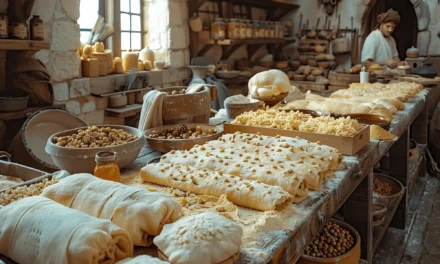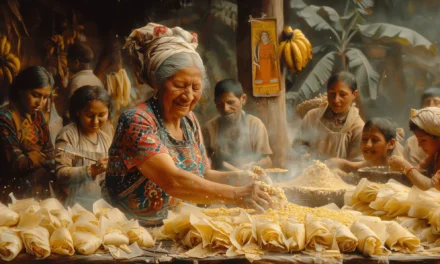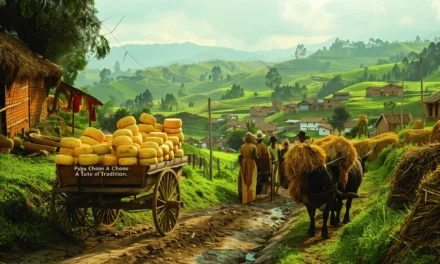Why is salt found more in some places than others?
When it comes to salt, some places are definitely saltier because salt results from minerals that have been slowly accumulating over millions of years from ancient seas. As these oceans evaporated, they left vast salt deposits and other minerals behind1.
But thanks to the tectonic plate action, some of those ancient salt deposits have resurfaced in certain parts of the world. Think of the earth’s crust like a trampoline. As new layers of sediments are added on top, some sink, and others emerge 2.
So the next time you reach for the salt shaker, just think about the long, slow journey those salt crystals have taken to get to your food. And maybe give a little thanks to the ancient oceans that made it all possible.

The Various Techniques Used to Obtain Salt
Salt comes from the sea, which is why it tastes so salty! When water evaporates, it leaves behind all the yummy salt. People have been harvesting salt for centuries by boiling seawater and then collecting the salt that forms on the surface. Nowadays, we have big machines that do this for us3.
When it comes to salt, there are only four ways to get the stuff: rock salt, saline waters, saline soils, or saline plants. And each human group eventually became experts in the techniques needed to extract salt from one or more of these raw materials. These techniques don’t have much difference, but the technological and technical differences relate to the raw materials used to get salt and the local resources available to extract it3.
It’s not as easy as just going out and collecting salt from the sea. Although salt is all around us in seas, rocks, and springs, it takes tools, equipment, time, and labor to get it out. In only a few cases, when the brine from the sea evaporates with sunlight, and you only need to collect the crystals, it could be considered an easy task. For some human groups, it was better to exchange other resources for salt to get this vital mineral than to obtain it on their own4.

Rock salt, or halite, consists of the mineral sodium chloride with a small number of other components (commonly magnesium, sulfur, or calcium). Pure mineral sodium chloride contains 60.6% chlorine and 39.4% sodium (Sherlock, 1921, cited in Harding, 2013). The salt concentration in seawater varies from sea to sea, but usually, it is in the range of 3.1 to 3.5%. One liter of seawater contains around 31-35 g of dissolved salts (most but not all sodium chloride)4.
Do you ever feel like you’re worth your weight in salt?
Sodium chloride is like the sugar of the ocean. It’s invisible, but it makes everything taste better. It’s been around since the beginning of time and is crucial for survival. Every animal and human need to have salt in their diets to keep their bodies (especially muscles and nerves) functioning properly since it is essential for cellular metabolism. Without it, they would be in the right pickle!1.
For centuries, salt could be worth its weight in gold! That’s because salt was not only essential for human life but also key to preserving food. Not to mention, salt was necessary for extracting other minerals and working on metals. In short, salt was a hot commodity for artisans. It was basically the ‘jack of all trades back then5.
Since salt wasn’t available in every location, different societies created trading routes to get their hands on the precious good. The scarcity and necessity promoted salt production for local consumption and exchange for other products. In fact, salt has played a vital role in the development of civilization2.

Since ancient times, salt has played a vital role in exchanging goods. The scarcity of salt and the necessity for humanity promoted the production of salt for local consumption and to exchange for other products that might be scarce in that region or highly appreciated among communities and groups located in remote areas. In fact, we’ve built whole civilizations around salt production and consumption5.
Because of its importance, salt became a symbol of power and wealth. It’s just like when you have a lot of money; you have a lot of influence. When rulers had a lot of salt, they also had more control over other commodities, such as metals or cereals. Because of all this, salt also became a spiritual and religious icon5.

In conclusion, salt is the spice of life; without it, we would live in a bland, boring world. It’s a mineral that has shaped how we trade and live, becoming a key ingredient in our cultural identity.
The Evolution of Salt: How This Spice has Influenced Civilization
At some point in our history, we decided to change our diets and include salt, probably because we started living a more settled life, based on agriculture and domesticated animals, instead of hunting and gathering. This new way of life required salt extraction to preserve food and work with raw materials. Before this, there was no evidence of an interest in salt other than the proximity to salt sources3.
In the beginning, humans would follow the trail of animals that licked rocks in search of salt. If people found an excellent place to extract salt, they turned the path into a road and established a settlement. The extraction and eventual exchange of salt began when humans established broad settlements3.
As populations grew, so did the demand for salt. But because it’s not exactly something you can find lying around on the ground, mining salt became increasingly difficult. In fact, salt became such a valuable commodity that only a few groups could provide it. This resulted in different trading routes emerging so that people could exchange other needed products for salt3.

How Salt Helped Build Civilization Through Trade
Different societies and groups used to trade using salt as a currency because it was so rare and valuable. Some human groups even specialized in extracting salt from mining or evaporating brine3.
These groups would exchange salt for other products that were also rare and highly appreciated because they generated trust among the parts involved in the transactions. The demand for salt made it very valuable. In some contexts, it had a value similar to gold and other precious metals4.
Salt has long been a symbol of value and wealth. People used to exchange salt for other products and services back in the day:
- Some believe that soldiers and workers were sometimes paid with salt during the Roman Empire.
- African civilizations stored salt blocks to hold onto their wealth, similar to how we keep gold reserves today.
- The Muiscas civilization issued a primitive version of future contracts, where they would agree to buy goods in exchange for a future salt supply.
On the Trail of Salt: The Story of the Sahara’s Salt Trade Routes
If you’re ever feeling lost in the Sahara, just follow the trail of salt to find your way back to civilization. That’s because salt has been traded across the desert for centuries and was even more valuable than gold at one point. Today, you can still see evidence of the ancient salt trade routes if you know where to look1.
Who would’ve thought that something as small and innocuous as salt could be such a big deal? But salt was one of the primary trade goods in ancient West and Sub-Saharan Africa. This is because very few natural deposits of salt could be found in these regions. So how did they get their salt? Through the salt trade, of course! Salt was transported on camel caravans through the desert or on boats that traveled on rivers like Niger and Senegal. Eventually, salt arrived at trading centers like Koumbi Saleh, Niani, and Timbuktu. There, it was traded for other goods5.
In some parts of the world, people traded for salt things like ivory, animal skin, copper, iron, and cereals. But the most common thing that people traded for salt was gold dust. There were a lot of mines in southern West Africa that had a lot of gold dust, and so people would trade salt for it5.
Although some of these communities could try extracting salt from seawater, the process was very complex, and obtaining high-quality and pure salt was difficult. They could also try extracting salt from plants; unfortunately, very few plants in the region were rich in salt. Luckily, there’s always the option of importing salt from the north. The Sahara desert is abundant in rock salt, which is available on the surface after the desiccation process of an ancient ocean5.
If you think the Sahara Desert is brutal to cross now, imagine how tough it was back in the day before the Berbers established trade routes! These intrepid travelers would cross the desert with nothing but a few camels carrying a couple of salt blocks weighing a whopping 90 kg each. When they arrived at a trading post, they would exchange the salt for goods to bring back across the desert on their return trip. Talk about a tough way to make a living!5
The leaders of these civilizations and the great players of the trading routes accumulated unprecedented wealth and greatly influenced the region. A well-known example was the rise of the medieval Mali empire.

How Pre-Columbians Traded Salt for Other Goods?
The pre-Columbian indigenous people’s salt was precious because it allowed them to bargain for other Scarce products in their area. The salt made it possible to create a network of roads and meeting places between indigenous markets. Salt mining became the pillar of the economy for some pre-Columbian civilizations.6 7.
This pattern is evident with The Muiscas, which mainly exploited the salt mines of today’s Zipaquirá, Nemocón, and Tausa municipalities in Cundinamarca. This region has extracted salt from at least the third century BC. Eventually, these locations became strategic points of commercial trade8.
Salt was a hot commodity among the natives, especially those on the Caribbean coast and inland. They exchanged it for other products such as cotton, corn, coca, fish, fruits, shells, gold, coal, emeralds, blankets, and pottery. They even exchanged one type of salt for the other. Just like how we have different types of salt today, there was a unique flavor that was appreciated for the other part8.
The main salt route was the one that went through the Magdalena River. The road communicated the Coanaos of the Caribbean coast with the Muiscas of the Andes. It allowed Gonzalo Jiménez de Quesada’s expedition to find a way to go further inland8.
In March 1537, they arrived at the lands of Nemocón, observing the Community elaborating the salt. Spaniards were keen to know the methods used to exploit salt because they could better understand the economic structure and values of The Muiscas. By learning their methods, the Spaniards could eventually benefit from that knowledge8.

The Meaning of Salt: What It Represented for Humanity?
Due to its vital importance and the power, wealth, and trust it represented, salt was accepted and well-received by most people and civilizations. Each human group developed a series of symbols to illustrate the importance of salt in their lives.
The symbolism around salt and its uses provided different kinds of value that transcended mere utility and positioned it as a product with a high standard and importance for the first human societies. Salt became generally accepted to trade and pay because it represented one or several values for individuals and communities.
- Weinberg, J. (2018, March 14). Why Salt was as Valuable as Gold. Retrieved from Condé Nast Traveller: https://www.cntraveller.com/article/salt-as-valuable-as-gold[↩][↩][↩]
- Goldin, J. G., Cohen, D., Rotello, G., Dolan, S., & Tarantino, L. (Directors). (2013). Big History [Motion Picture].[↩][↩]
- Brigand, R., & Weller, O. (2015). Archaeology of Salt: Approaching an Invisible Past. Leiden: Sidestone Press.[↩][↩][↩][↩][↩][↩]
- Harding, A. (2013). Salt in Prehistoric Europe. Sidestone Press: Leiden.[↩][↩][↩]
- Cartwright, M. (2019, March 6). The Salt Trade of Ancient West Africa. Retrieved from World History Encyclopedia: https://www.worldhistory.org/article/1342/the-salt-trade-of-ancient-west-africa/[↩][↩][↩][↩][↩][↩][↩]
- Patiño, V. M. (Octubre de 1990; 2012). Historia de la cultura material en la América equinoccial: I. Alimentación y alimentos. Obtenido de Ministerio de Cultura: https://www.mincultura.gov.co/Sitios/patrimonio/bibliotecas-de-cocinas/tomos/tomo01.pdf[↩]
- Rojas de Perdomo, L. (2012). Comentarios a la cocina precolombina. De la mesa europea al fogón amerindio. Retrieved from Biblioteca básica de Cocinas Tradicionales de Colombia:
https://www.mincultura.gov.co/Sitios/patrimonio/bibliotecas-de-cocinas/tomos/tomo02.pdf[↩] - León Soler, N. (2011, November). INDUSTRIA SALINERA EN COLOMBIA. Retrieved from Credencial Historia: http://www.revistacredencial.com/credencial/historia/temas/industria-salinera-en-colombia[↩][↩][↩][↩]




